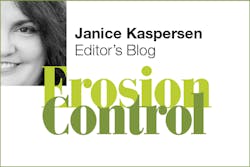
When is a river not a river? A new book from journalist David Owen takes a close look at the Colorado River and the complex struggle over the rights to its water. The Colorado, he points out, has become far more than a natural channel with water flowing through it. It also consists of dams, power plants, pumping stations, and plenty of controversy, with allocated water rights stretching back more than a century. The amount of water a state, or a farmer, or any other claimant can use is expressed in volume—a certain number of gallons—rather than as a percentage of annual flow. The problem is that the river’s flow fluctuates tremendously from year to year depending on precipitation and snowmelt, so we end up with “paper water”—the amount which, by agreement, people have the right to use—and “wet water,” the amount that actually exists.
He notes that the situation “when viewed from afar can seem tantalizingly easy to solve: all we need to do is turn off the fountains at the Bellagio [a hotel in Las Vegas], stop selling hay to China, ban golf, cut down the almond trees, and kill all the lawyers.” He goes on to show why none of these is as simple as it seems. However, he also points to promising recent negotiations between the US and Mexico, modifying some parts of a 1944 water treaty.
Owen also examines the issue of prior appropriation, which means that those who claimed water rights on the Colorado River early on essentially have those rights in perpetuity—what he describes as “first come, first served, forever”—rather than a periodic reexamination and reprioritization of water needs. (During the recent drought, California did curtail the rights of some senior rights holders, as I mentioned here, along with an article Owen wrote for the New Yorker in 2015 titled “Where the River Runs Dry,” on which his new book is partially based.)
One person interviewed in the book notes that most people, even those who consider themselves to be environmentalists, don’t really understand where the water they use comes from and how it gets to them. What’s the situation in your state or region—do most people know the source of their drinking water, whether that’s a river, groundwater, or some other source? Where do concerns about water quality and water supply rank in the overall scheme of public discourse?
Infrastructure Week is May 15-19, so join Forester’s Infrastructure Photo Contest!
If you see infrastructure you feel is in need of repair, rehabilitation or replacement, take a picture of it and email it to [email protected]. A winner will be determined at the end of Infrastructure Week, May 15 – 19, 2017.
The winning photo will be published in Forester magazines and on the Forester Network website. (Please submit photos at least 4”x 6” and 300 dpi.)
About the Author
Janice Kaspersen
Janice Kaspersen is the former editor of Erosion Control and Stormwater magazines.

